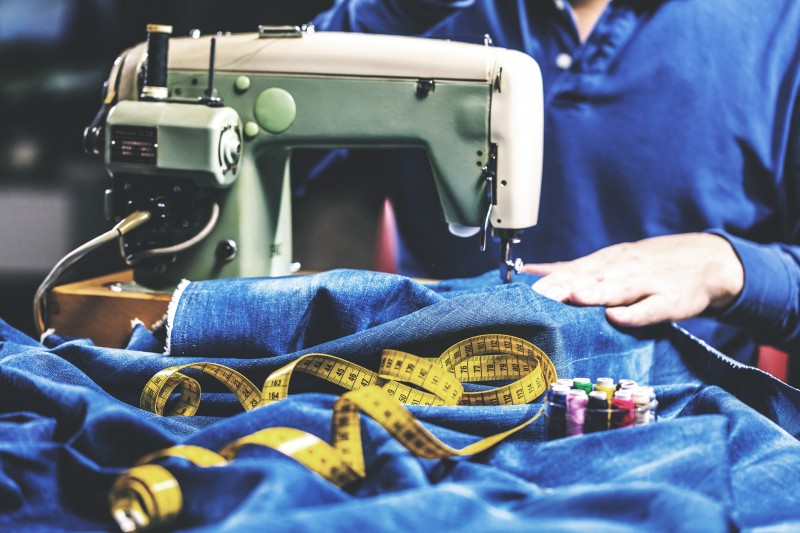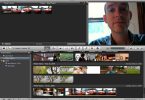Denim is a durable fabric that’s tightly woven. The warp threads are dyed (traditionally with indigo), and the weft threads are bleached.
This creates the ridged, diagonal texture of denim. The twill weave also makes the fabric thick and hard-wearing.
Denim can be used to make a variety of clothing items. The fabric is a great choice for casual pants and shirts.
It’s Durable
Table of Contents
Denim is a dense, durable fabric that strengthens from a combination of weave and fiber. It is typically woven in a diagonal twill pattern, with more warp threads than weft threads. The warp threads are often dyed blue, creating the classic indigo color that most know and love. The weft threads are usually left white, creating the subtle diagonal ridges that make denim distinctive and recognizable.
Denim can feel stiff when you first work with it, and it takes a while to soften with regular wear and washing. But once it’s softer, it’s quite sturdy and hardwearing, perfect for making jeans or even a dungaree-style dress! Wear in warm climates can also be heavy and hot, but this will soften with regular wearing and washing.
Traditionally, the denim used for jeans and other clothing was hem, meaning it had tightly woven edges. But today, most of the denim we buy is woven with broken twill. This technique shoots the weft thread through a warp rather than throwing the shuttle back and forth, as with selvage.
This type of denim is a mix of cotton and polyester, which helps to control shrinkage and wrinkles, but it can also be mixed with elastane or spandex for added stretch. This can help you create more fitted garment styles, so check the care instructions for your specific fabric before you purchase it!
It’s Comfortable
Denim is a sturdy fabric with a unique blend of functionality and style. It is woven from cotton in a special type of weave called twill. This gives the material its characteristic diagonal ridged texture. The yarn is dyed blue to provide its trademark indigo color. Modern innovations include stretch denim for comfort and printed denim to open a world of style possibilities.
Aside from the fact that it’s comfortable to wear, this durable material is easy to sew. It’s a great choice for beginners to work with as they learn to refine their skills. It’s also forgiving enough to create various sewing projects, from simple tote bags to sophisticated dresses.
While the twill structure of the fabric makes it sturdy, it’s also not the most breathable option out there. This can lead to sweating, which can breed bacteria and make you feel clammy. If you choose to use this fabric, it’s a good idea to use a high-quality antibacterial detergent to prevent the growth of microorganisms.
If you plan to buy denim fabric by the yard, looking for sanforized options is important. This process ensures that the material will not shrink after washing. This is especially important if you use the fabric for clothing or upholstery.
It’s Versatile
There isn’t a more iconic fabric in the clothing world than jeans. They’re worn by people from all walks of life, from Hollywood leading men to small-town farmers. They’re durable, versatile, and stylish; you can make them into any desired garment. And what’s better, they’re also easy to sew!
Denim is a type of cotton twill fabric that’s often dyed indigo. It has a distinctive mottled appearance, woven in a special way that makes it extremely strong.
Many different types of denim exist, including corduroy and stretchy denim. Corduroy is thick and warm, while stretchy denim has some spandex to give it flexibility. This fabric is ideal for making pants, skirts, and dresses.
Denim is one of the most versatile fabrics in the world, perfect for making various clothes. However, a few things to remember when sewing with this material. First, it’s important to understand that it’s a natural fabric that requires a lot of water to grow. This can be problematic for the environment, as it releases a lot of waste and pollution into the air. In addition, some denim is made with synthetic materials like polyester, which is produced using petrochemicals and other harmful chemicals.
It’s Affordable
Denim is among the most affordable natural fabrics and is less expensive than cheap artificial fibers such as polyester and rayon. While some organic materials are more expensive, the difference is negligible, and many consumers are willing to pay a little extra for safer textile products.
Considering the entire supply chain when purchasing any fabric, including denim, is important. The cotton production releases toxins into the environment, damaging plant, animal, and human health. It’s also common for the manufacturers of textile products to use slave labor to increase profits, which hurts the environment and the workers.
Whether you’re working with blue jeans or a more versatile style of denim, you’ll want to purchase thick fabric to stand up to regular wear and tear. A medium-weight to heavy-weight variety will be best, depending on what you plan to make with it. Generally, lighter denim is more suitable for shirts and dresses, while thicker types are better suited for jackets and pants.
The color of the fabric is another factor to consider. Many retailers carry shades, from raw, unwashed denim to pre-washed, distressed styles with a worn-in look. You may also find stretch denim, which is perfect for making garments that need a bit of flexibility, like skinny jeans and fitted shirts.






